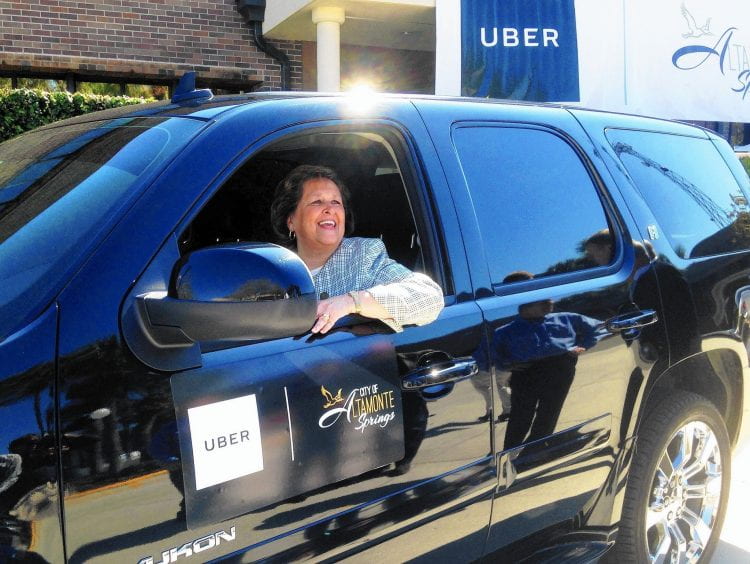May 26, 2016
Ridesourcing and transit: frenemies?

Yanbo Ge
Transportation Network Company (TNC) services (such as Uber and Lyft), as a new transportation mode, have been expanding rapidly in recent years. There seems to be no consensus yet on whether these services are a friend that complements or an enemy that marginalizes public transportation. In most cities around the world, Uber is treated with at least some degree of hesitation by the government. But recently, Altamonte Springs, a suburb of Orlando Florida, has taken steps to try and move Uber firmly into the “friend” camp. The city has signed a one-year trial to subsidize Uber rides with origins or destinations within its borders, with the hope of reducing road building and other public transportation expenses. For every trip that starts or ends in the city, the government pays 20% of the Uber fare, or 25% for trips to/from the region’s commuter train system. This system arose when the city’s original Uber-like bus plan FlexBus fell through. The city manager identified the goals of this program as: (1) integrate on-demand ride service into the transportation system (2) get cars off the road and (3) induce people to use mass transit.

Altamonte Springs Mayor Patricia Bates sits at the wheel of an Uber vehicle at City Hall after announcing the new partnership between her city and the ride-sharing company.Martin Comas, Orlando Sentinel
I am skeptical that this policy will reduce driving and encourage public transportation. Whether those goals can be realized depends on how many driving trips could be shifted to “Uber + public transportation”, which will depend strongly on two factors: cost reduction and travel time reduction. The baseline fee of an Uber ride in Orlando is $5.50 and since the government subsidy pays for $1.38 (25%), the Uber passengers will still need to pay $4.13 for a short ride. Considering that the cost of commuter train is $3, from Altamonte Springs to Orlando, a “Uber+train” trip will cost a minimum of $7. On the other hand, assuming that the total cost of driving is $0.47 per mile, making this 10.9 mile trip by personal car would cost just $5.12. Google Maps shows that the estimated time of driving from Altamonte Springs to Orlando city center is about 18 to 35 minutes during rush hour, while the travel time in train will be 25 minutes. Considering the waiting time to get an Uber ride and the travel time from the trip origins to the rail station, “Uber+train” commuting mode will probably not help to save time either. Of course, this analysis neglects other factors such as incentives for public transportation (e.g. fare reduction for regular commuters) and negative incentives of driving (e.g. high parking fee in Orlando city center, gasoline tax), but without combinations of other policies, to me it is not likely that there will be a big commute mode shift.
Although it is not likely that a lot of driving trips will be shifted to Uber+train, some in-town trips by alternative modes such as walking, biking and bus could be replaced by Uber trips because it can reduce travel time in the city. This will be quite the contrary to the government’s stated purpose. This is probably the reason why some argue this move could “blow the city’s budget out of the water“. Compounding the budget risk is the potential for Uber to increase fares within Altamonte Springs through increased use of surge pricing. This could have the effect of increasing Uber’s revenues without actually reducing prices for travelers. A more thorough understanding of the elasticity of supply and demand for Uber services would be necessary to fully assess this risk.
Finally, I suspect that even if Uber can reduce driving in Altamonte Springs, the subsidy will primarily benefit those with relatively higher income and those with smartphones, because it still will not be an affordable choice for low income citizens. Thus, the sustainability of this policy will be challenged both economically and socially, for potentially negligible environment benefits.
Despite these misgivings, the trial in Altamonte Springs is a worthwhile experiment that will doubtless increase our understanding of how to effectively integrate traditional mass transit with new mobility services.

Recent Comments